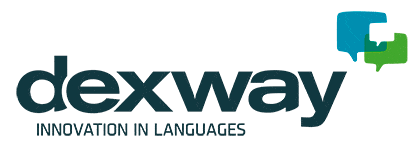The blended learning methodology has recently become one of the most popular e-learning methods, giving rise to many questions about blended learning. Management, heads of studies and teachers have all asked us about how to use Dexway courses alongside this successful methodology. The aim of this article is to answer all, or many, of these frequent doubts about blended learning and analyse why it has become such an educational phenomenon.
To give an idea of its impact, studies such as this one on British universities show that 69% of them already use, or intend to begin using, blended learning. This percentage is on the increase thanks to the fact that teaching facilities and student resources are better prepared for this method of teaching and its many aspects.
Let’s dive right in and ask ourselves… what’s the buzz about blended learning? Why is it becoming so popular?
Let’s start with the basics:
What exactly is blended learning?
Whether you know it as blended, mixed, or hybrid learning, there is no definite answer out there.
This is because blended learning can mean different things to different people.

But since we want to provide a somewhat reasonable answer to this question, we went ahead and dug deeper until we found definitions that we think can be pretty descriptive and representative.
A way of learning that combines traditional classroom lessons with lessons that use computer technology and may be given over the internet
The definition of blended learning is a formal education program in which a student learns:
- at least in part through online learning, with some element of student control over time, place, path, and/or pace;
- at least in part in a supervised brick-and-mortar location away from home;
- and the modalities along each student’s learning path within a course or subject are connected to provide an integrated learning experience.
I know… That is a lot to process.
Let’s try to simplify it saying that, blended learning, it’s a technique that allows teachers and language centers to use both face-to-face instruction builds, combined with the convenience, independence and personalization that online learning provides.
In other words… It “blends” traditional face-to-face education with online education.
So, now that we have a grasp of what it is. How do we know if blended learning is right for us?
Let’s go over the most frequent questions and answers to see if your language center can take advantage of this new learning method.
Questions about blended learning
These questions (with their accompanying answers) were selected on the basis of the frequency we receive them, as well as their relevance. We hope they make the blended learning method and its applications clearer.
Are blended learning and online learning methods the same?
No. With Blended Learning, you typically study content in class with the teacher and then continue it at home. Online learning, on the other hand, is given online on its entirety, even the “face to face” class, which occurs via video call or telephone.
Is blended learning effective for language education?
More and more research is being done to help measure the overall effectiveness of blended learning in language education.
These 12 case studies of how traditional school districts improved student learning outcomes after implementing blended learning is a perfect example:
I want to begin using blended learning strategies in my classroom, where should I start?
Creating a blended learning environment can initially be overwhelming.
We recommend between these two options:
- You can either use a backward design process to determine coherent program goals/success metrics. Then continue looking at your available technology resources (Tablets, laptops, computers…), your available space, and which content you anticipate using in your blended learning environment. And once you have established your resources, you can begin looking at which blended learning models may be a good fit for you and your students.
- Or you can use a finished platform, designed specifically for language centers to create their own unique methodology that provides interactive content creation, management of classes and tutors online. As an example, tools like Dexway would be a perfect intro level tool for blended learning as well as very easy and manageable resources to use.
Can I do blended learning in my traditional classroom?
Yes. There are many ways you can do blended learning. And although you don’t need a high-tech classroom, there are plenty of solutions that will help you transform your traditional classroom into a complete blended learning experience.
Is blended learning good for large intro classes?
In large introductory classes, forms of blended learning integrated with active learning can support students who don’t do well with the traditional lecture and test format. The technology in blended learning allows for efficient tracking of student outcomes. Rather than take only two or three exams, students can engage in online exercises, take online quizzes, and do other activities that provide frequent feedback without the necessity of hand-grading.
Is blended learning good for small advanced classes?
In small advanced classes, the connection between blended learning and active learning can be powerful, as online interactions among students (and students and instructors) can enhance, and be enhanced by, face to face interactions in the classroom.
Blended Learning is a tool that helps homogenize different levels, making it perfect for any class level and size.
Can different blended learning technologies serve different purposes?
Although there is no research establishing that certain technologies serve certain types of learning, we can hypothesize that, for example, technologies like videos might support the development of foundational knowledge, while on-line interactive scenarios might support application learning. Or forums might be good for integration.
Does blended learning require a lot of technical expertise?
No. The more expertise you have, the more possibilities you can imagine. But at the end of the day, it is up to you to choose how to use the technology in your favor. Use the ones that make you feel comfortable and that you already know how to use, or just purchase a finished tool like Dexway, that has been designed specifically to support every aspect of blended learning while staying simple and easy to use.
Where can I get training in blended learning?
We suggest taking a look at different blogs and educational websites to gather information on the subject. This Dexway’s blog post, for example, is full of tips, tricks and valuable information for you to read and prepare to switch from traditional classes to blended learning education.
Learn how to increase student recruitment for your language school
In short, blended learning emerges as a powerful educational tool which is able to adapt to the needs of students and the current educational environment. These questions and answers have allowed us to explore the fundamental aspects of this innovative approach, highlighting its ability to combine the best of traditional teaching with the advantages of modern technology.
También le puede interesar:
- Successful E-learning Solutions for Language Training
- Implementing blended learning in your training centre: the first steps
- The importance of digital transformation for academies and language centers

